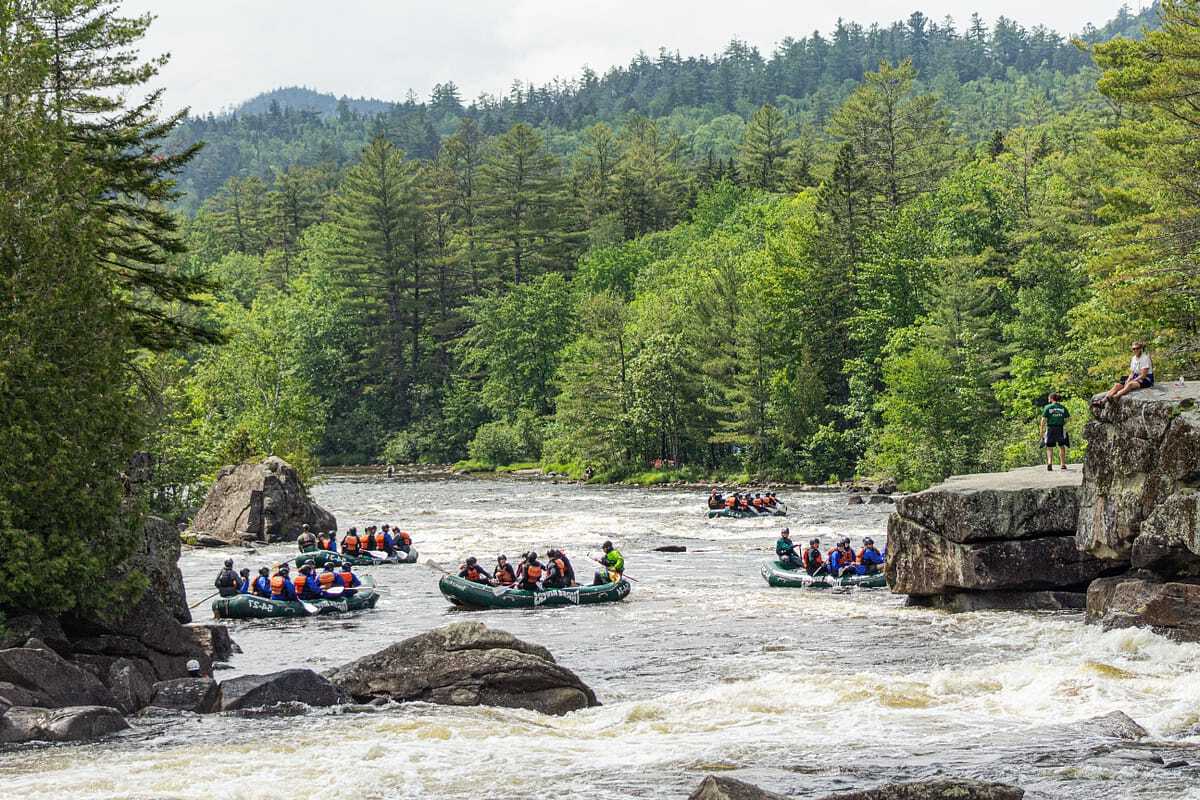Secrets Of The Sawmills: Hidden River Log Drives Of Maine

Ever wondered how logs made their way from deep forests to bustling sawmills in Maine? The answer lies in the hidden river log drives that once crisscrossed the state. These log drives were a vital part of Maine's timber industry, using rivers as natural highways to transport massive logs. Picture rugged loggers, known as "river pigs," skillfully guiding logs down treacherous waters, ensuring they reached their destination. This fascinating piece of history not only highlights the ingenuity of early loggers but also showcases the natural beauty of Maine's waterways. Let's dive into the secrets of these incredible log drives and their impact on the state's history.
The Historical Significance of Maine's Log Drives
Maine's log drives were a crucial part of the state's history. These drives transported timber from the forests to the sawmills, fueling the region's economy. Let's explore some hidden gems along these historic routes.
1. The Kennebec River
The Kennebec River played a vital role in Maine's logging industry. This river was a major route for log drives, with logs floating downstream to the mills.
- Augusta: The state capital, Augusta, saw countless logs pass through its waters. The Kennebec River here was bustling with activity during the peak of the logging era.
- Waterville: Waterville, another key location, had numerous sawmills along its banks. The town's history is deeply intertwined with the logging industry.
- Skowhegan: Skowhegan's rapids made it a challenging but essential part of the log drive route. The town's heritage is rich with logging stories.
2. The Penobscot River
The Penobscot River was another significant waterway for Maine's log drives. This river's vast network of tributaries made it ideal for transporting timber.
- Bangor: Known as the "Lumber Capital of the World," Bangor was a hub for log drives. The city's waterfront was lined with sawmills and bustling with activity.
- Old Town: Old Town's location on the Penobscot River made it a key player in the logging industry. The town's history is filled with tales of log drives and sawmills.
- Lincoln: Lincoln's mills processed vast amounts of timber from the Penobscot River. The town's economy thrived on the logging industry.
3. The Androscoggin River
The Androscoggin River also played a significant role in Maine's logging history. This river's strong currents made it a challenging but essential route for log drives.
- Lewiston: Lewiston's mills were powered by the Androscoggin River's currents. The town's industrial growth was fueled by the logging industry.
- Auburn: Auburn, located across the river from Lewiston, also benefited from the logging industry. The town's mills processed timber from the Androscoggin River.
- Rumford: Rumford's location on the Androscoggin River made it a key player in the logging industry. The town's mills were essential for processing timber.
4. The Allagash Wilderness Waterway
The Allagash Wilderness Waterway is a remote and pristine area in northern Maine. This waterway was used for log drives, transporting timber from the deep forests to the mills.
- Chamberlain Lake: Chamberlain Lake was a starting point for many log drives. The lake's calm waters made it an ideal location for gathering logs.
- Eagle Lake: Eagle Lake's remote location made it a challenging but essential part of the log drive route. The lake's history is rich with logging tales.
- Allagash Village: Allagash Village, located at the end of the waterway, was a key destination for log drives. The village's history is deeply connected to the logging industry.
5. The Moosehead Lake Region
Moosehead Lake, the largest lake in Maine, was a crucial part of the state's logging industry. The lake's vast waters made it an ideal location for gathering and transporting logs.
- Greenville: Greenville, located on the southern shore of Moosehead Lake, was a hub for log drives. The town's history is filled with stories of logging and sawmills.
- Rockwood: Rockwood, located on the western shore of the lake, played a significant role in the logging industry. The town's mills processed timber from the surrounding forests.
- Kineo: Kineo, located on a peninsula in Moosehead Lake, was a key location for log drives. The area's history is rich with logging tales.
The Legacy of Maine's Hidden River Log Drives
Maine's hidden river log drives tell a story of hard work, innovation, and community. These log drives were essential to the state's timber industry, moving logs from remote forests to bustling sawmills. Workers faced dangerous conditions, but their efforts helped build towns and cities. The log drives also shaped Maine's rivers, leaving a lasting impact on the environment.
Today, the legacy of these log drives lives on in the memories of those who worked them and in the stories passed down through generations. They remind us of a time when human ingenuity and determination could overcome nature's challenges. As you explore Maine, take a moment to appreciate the history and the people who made it possible. The hidden river log drives are a testament to the spirit of Maine and its enduring connection to the land and water.

